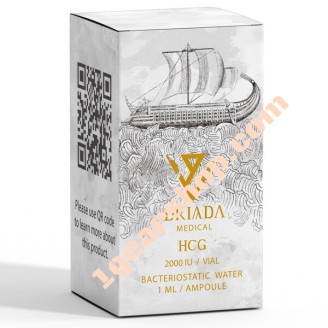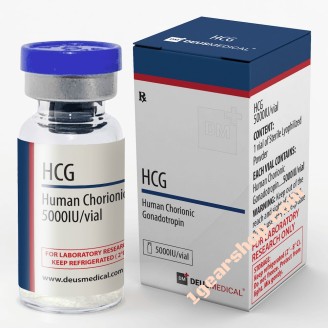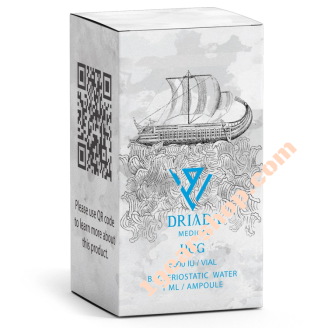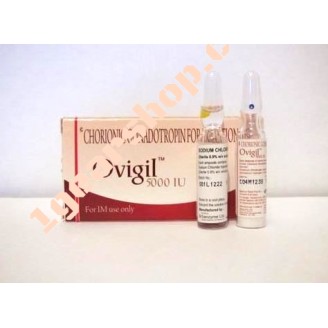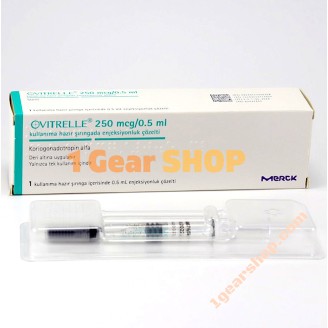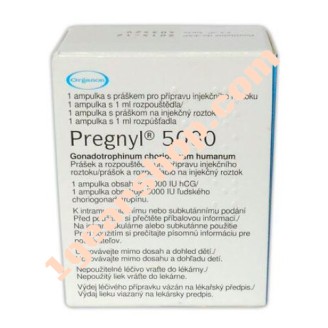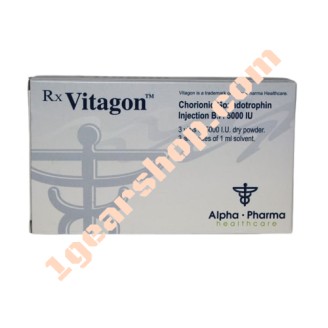Human Chorionic Gonadotropin
Buy HCG - Human Chorionic Gonadotropin Online
HCG (Human Chorionic Gonadotropin)
Human chorionic gonadotropin is used during steroid cycles to prevent testicular atrophy and total inhibition of testosterone secretion.
Active Substance: Human Chorionic Gonadotropin
Commercial Names: Gonadotropin, Magnyl, Pregnyl, HCG, Ovigil, Ovegest
Drug Class / Purpose: Hormones / Prevent Testicular Atrophy / Restores Testicular Function
hcg hormone Description
Human Chorionic Gonadotropin is a hormone found only in the placenta of pregnant women. For women it's not too significant, but for athletes it has some very interesting features. It can mimic the luteinizing hormone (LH), secreted by the pituitary gland, which is the signal to testosterone production. Sex hormones act through negative feedback, when they are present in too high quantity (such as androgen or estrogen steroids) a signal is sent to the brain to stop the secretion of LH. During long-term steroid cycles, if your own testosterone secretion is too long suppressed, the testicles will begin to atrophy until they lose their functionality. By administering HCG, the function of the testicles and their coming back to normal size can be restored.
Testicular atrophy can be easily prevented with the help of Gonadoropin. But for this it needs to be given in small doses throughout the steroid cycle. Unfortunately, many steroid users still believe that HCG is used after the steroid cycle, as part of post-cycle therapy. But if Gonadotropin is taken during steroid treatment, recovery is faster and better.
Studies have shown that 100 U.I./day of Gonadotropin is a sufficient dose to maintain testicular functions. It is important that these small doses of HCG to be started before the testicles start to loose their sensitivity, which appears rapidly in the first 2-3 weeks of the cycle. Equally important is the discontinuation of HCG 2-3 weeks before starting post-cycle therapy, so that leydig cells to be readjusted to the luteinizing hormone produced by their own body.
hcg hormone Dosage During Steroid Cycles
During the steroid cycles, HCG is used in dosage of 250 I.U. once in 4 days, starting at 14 days after the first administration of steroids. HCG administration is stopped 2-3 weeks before starting PCT. For example, HCG administration will be stopped at about the same time as the last testosterone enanthate injection.
If it is oral steroids, HCG will be discontinued 10 days before the last dose of steroids. Thus the pituitary gland will begin its own secretion of luteinizing hormone (LH). Recovery begins only after HCG has left the body. The body not producing HL for as long as there is HCG in circulation.
The doses of HCG may vary, so those with high percentages of fat require higher doses of Gonadotropin:
<10%: body fat: 100-300 I.U./ twice a week
10-15%: body fat: 300-350 I.U./ twice a week
> 15%: body fat: 350-500 I.U./ twice a week
hcg hormone Dosage During PCT
Gonadotropin in post-cycle therapy, it is not used with Clomid. It can be used in small and frequent doses, 250-500 U.I. daily, for 2-3 weeks, immediately after the end of the steroid cycle. HCG should always be taken with Nolvadex in dosage of 20mg/day, to avoid estrogen-related side effects, especially gynecomastia (especially if HCG is administered in high doses). Small doses of 250 U.I or 500 U.I. decrease the risk of desensitizing the testicles. It is best to start from 250 U.I., and if in 5-6 days you don't notice any effect (the testicles do not recover), slightly increase the dose.
The HCG cycles should be 2-3 weeks with a break of at least 1 month between them. Prolonged use can permanently desensitize the testes to the luteinizing hormone, which means that the testicles will never produce testosterone again.

